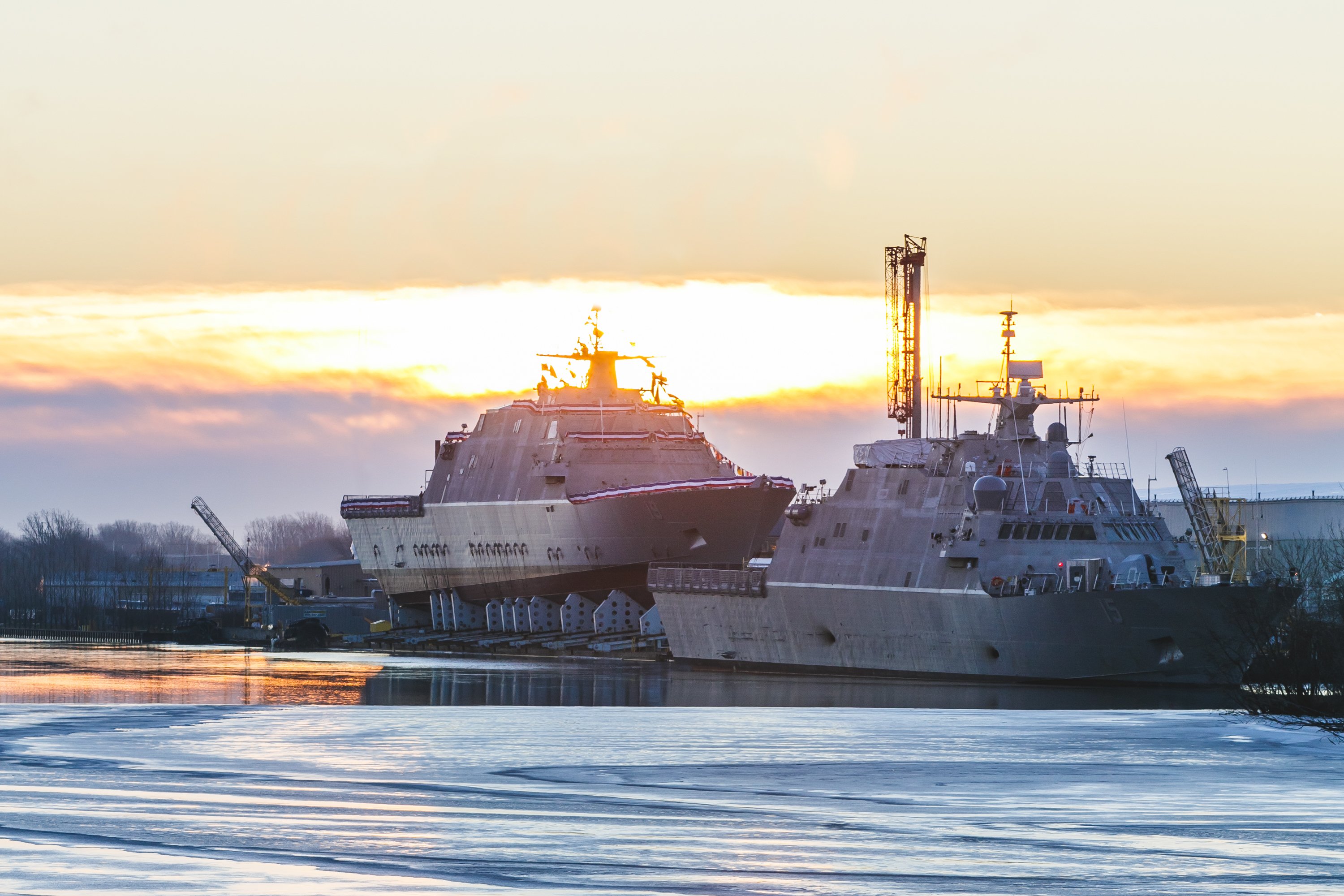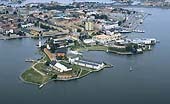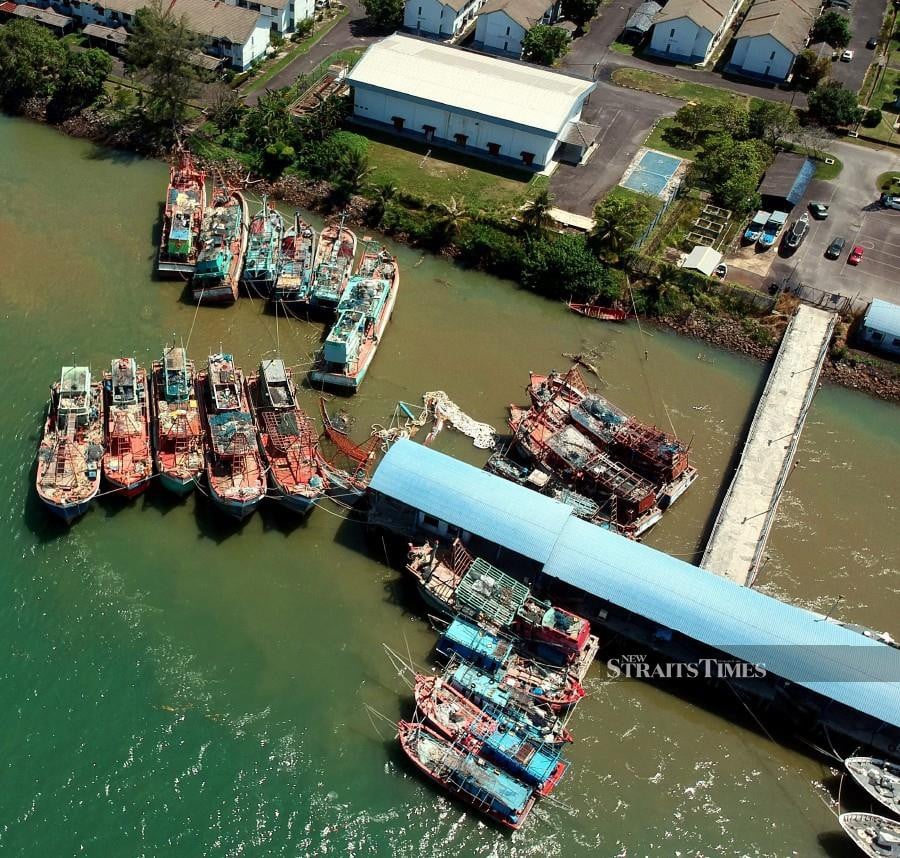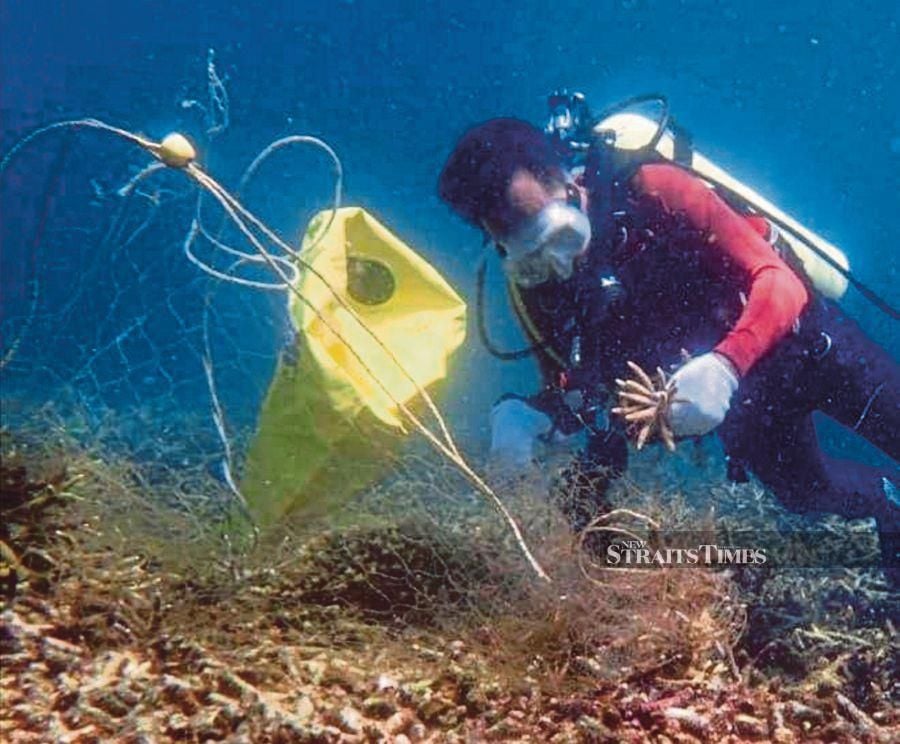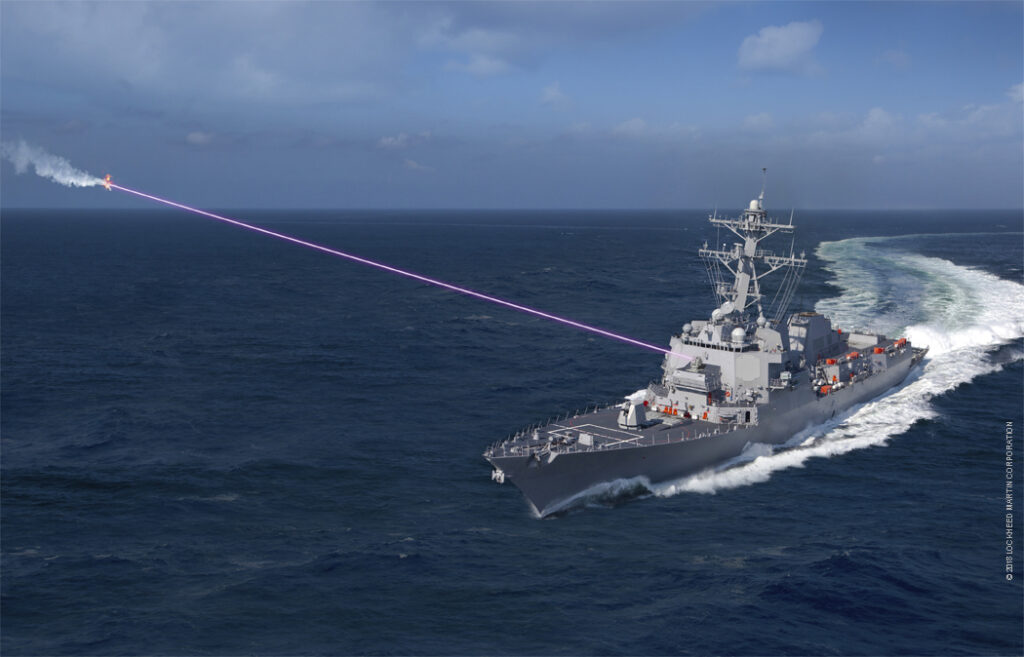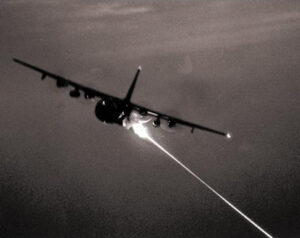his is the third in our exclusive series on the crucial but neglected question of sea mines and how well — or not — the United States manages this global and very real threat. Here we’re looking at the most promising technologies, ships and aircraft that can give the United States the edge in this crucial and complex battle. What works? Read on. The Editor.
Clearing sea mines is so murderously hard that the best defense is to sink the ships or shoot down the planes carrying them before they can be put in the water. But politics, surprise, or
fear of escalation might keep the US military from stopping the minelayers “left of splash.” That means somebody had better be ready to go after the deadly explosives in their natural habitat. The great leap forward today is that “somebody” is increasingly likely to be a
robot.
For over a century, clearing mines was a brutal, crude and close-up business. Specialized ships, divers, and even trained dolphins had to go right into the minefield. The US Navy has led the world in counter-mine equipment that could be towed from helicopters, but that still means flying low, slow and in a predictable pattern in airspace where enemy aircraft or missile launchers might be watching. There are even reports that
China has developed
anti-helicopter mines designed to launch themselves out of the water. For more than a decade, the Navy has increasingly invested in technologies to “keep the sailor out of the minefield” by sending unmanned systems in, both under water and on the surface.
Since 2002, when the Navy officially launched its controversial
Littoral Combat Ship program, this new remote-controlled approach has been intimately linked with LCS. When fitted with its
Mine Counter-Measures module, whose first iteration goes into full-up operational testing this year, LCS will replace the Navy’s
remaining 13 wooden-hulled
Avenger-class minesweepers.
The Navy ethos has been thoroughly aggressive since its birth: “I wish to have no Connection with any Ship that does not Sail fast for I intend to go in harm’s way,” wrote
John Paul Jones in 1778. The fleet has always favored fast ships that can take the battle to the enemy:
aircraft carriers, nuclear-powered
submarines, guided-missile
destroyers. By contrast, minesweeping is slow, inherently defensive and, well, just not sexy.
New Anti-Mine Technologies
But there are two substantial silver linings for mine warfare. First, the LCS is not all dead. The Navy still plans to build 32 (down from 52) of the original design, the one that can perform mine-hunting missions. Second, new mine-clearing technologies are no longer tied to the LCS program.
The Navy even repurposed a decommissioned amphibious ship, the
USS Ponce, as what’s called an
Afloat Forward Staging Base (AFSB), primarily to support counter-mine operations. Two more purpose-built AFSBs will follow, and “the primary mission of the Afloat Forward Staging Base [is] aviation mine countermeasures,” said Capt. Henry Stevens of Naval Sea Systems Command at January’s
Surface Navy Association conference. While the AFSB can potentially accommodate a multitude of missions, from special operations to V-22 Ospreys, its design is driven first and foremost by the needs of the massive MH-53E helicopter used for aerial mine-clearing.
Precisely because the Littoral Combat Ship’s design is modular, it’s relatively easy to break off specific systems and use them independently. “The various MCM mission systems are programs of record in their own right, which the LCS Mission Modules program then integrates,” Naval Sea Systems (NAVSEA) spokesman Matthew Leonard explained. A former top aide to the Navy’s top admiral,
Bryan Clark, has
proposed taking the entire MCM module and installing it on ships other than LCS, including both future
Afloat Forward Staging Bases like
Ponce and the smaller
Joint High-Speed Vessels (JHSVs).
So, in spite of the decision to curtail the LCS buy, new mine-clearing technologies may end up spreading widely through the fleet. With increasingly aggressive Russia and China amassing hundreds of thousands of increasingly sophisticated naval mines, a revolution in minesweeping might be just what we need.
Divers, Dolphins & Dead Sheep
How primitive can “modern” mine warfare get? At least as recently as the 1990s, US sailors hunting mines spent a lot of time shooting dead sheep.
Both Iraq and Iran used the classic black-spiky-ball mines that are the world’s most common type. Clones of the century-old Russian M-08, these are contact mines that detonate when a ship bumps against their “horns.” Until then, they float somewhere below the surface of the water, anchored in place. Sometimes, though, the anchor chain breaks. Then the M-08 bobs to the surface and drifts about at random until it bumps into something, like a lethal bath toy. It’s also possible, albeit against international law, to set mines adrift on purpose.
But stray mines are hardly the only thing drifting around. Humanity has a multi-millennium bad habit of dumping garbage in the sea. Some of it floats. From a distance — which is definitely how you what to deal with a suspected explosive device — it can be hard to tell that junk from a mine.
“It’s why we used to shoot all the sheep,” said Bob O’Donnell, a retired Navy captain with a long career in mine warfare. “Over in the Persian Gulf, they have all these sheep ships coming from Australia and New Zealand, and when the sheep would die, they’d thrown them into the water. They’d bloat; their little legs would stand up” — and suddenly you’d have a round, dark object with four spiky projections bobbing in the water, looking uncomfortably like an M-08. So, O’Donnell recounted, US sailors would do what mine-hunters have done since at least World War I: go up on deck, shoot the drifting object, and see if it explodes.
That’s how tricky it is to handle mines that you can see. Mines under the water are far harder. In theory, a tethered mine is a pretty obvious target: very few natural or manmade objects float at a specific depth and location with an anchor chain keeping them in place. In the real world, sonar has real difficulties finding them.
The problem is the ocean’s not a bathtub. It’s not the atmosphere, either, where radar can look hundreds of miles. Underwater currents; differences in pressure, temperature, and salt content (salinity); currents; even how sound waves reflect off the bottom — all these factors change how sonar performs, sometimes from hour to hour. “You can optimize your capabilities against a certain kind of threat in the morning and it won’t be that good in the afternoon,” mine warfare expert Scott Truver said.
Even more difficult than mines floating underwater are those on the bottom. “Something that has a ball, a chain, and an anchor, that’s pretty apparent that’s a mine,” said Navy Capt. Frank Linkous, a mine warfare official. “When you start looking at things on the bottom, it could be a mine, it could be a barrel, it could be a tire, it could be a lot of stuff, [like] rocks.” Each suspicious sonar return must be marked as a “mine-like contact” and investigated.
Worst of all are mines buried
under the bottom of the sea. There is no sonar in current service that can find them, said Navy Captain Aaron Peters, an explosives ordnance disposal (EOD) specialist. “The only things that can detect buried mines right now are your
marine mammals,” he said, primarily trained dolphins. But the Navy is working on a new system called Knifefish, with a special low-frequency sonar that can penetrate ordinary soil and detect small, dense objects such as explosives. It won’t be ready until 2017.
Until the new drones and sensors spread through the fleet, the mainstays of mine warfare will remain the
MH-53E Sea Dragon helicopter and the
Avenger-class minesweeper, both of which entered service in the 1980s. The helicopter is literally the cutting edge of the current force. It tows a cable through the water that slices the mooring cables of mines like the M-08, forcing them to bob to the surface where someone can blow them up. Usually those are human beings, highly trained Explosive Ordnance Disposal divers who must swim up to each individual mine, attach an explosive, swim clear, and detonate.
More sophisticated mines, ironically, can be easier to detonate. Because advanced mines detect ships by the noise they make or their magnetic fields, they can be set off prematurely by an “influence sweep system,” a kind of decoy that emulates the acoustic and magnetic telltales of a ship. It’s the MH-53E helicopter, again, that tows the sweep “sled” through the water.
After the helicopters have done all they can from the air, the Avengers sail into the mine field to take a closer look. Hopefully only the stealthier, deeper mines remain by this point, with no contact mines left to bump into near the surface, while magnetically triggered mines cannot detect the minesweeper’s wooden hull. Any surviving mines with acoustic triggers might still pick up the Avenger‘s engines, however, and pressure-triggered mines might sense its hull displacing water.
“For a mine countermeasures guy, the worst problem is a country that’s got a goodly number of mines [of] different types,” said O’Donnell. “You start from the top of the ocean down and you try to take out the different mine types going from shallow to deep, because you’re trying to make it safe for our current mine countermeasures vessels to get in there and work.”
But savvy adversaries will set some mines to lurk on or near the bottom with their sensors turned off so they can’t be decoyed into detonating prematurely. Instead, they go live at some preset time, let out more slack in their anchor chains, and rise. So, said O’Donnell, “you think you got all the mines out, but you didn’t, because two days later one of these close-tethered mines decides to move up.”
That is the kind of danger US sailors face using current techniques and tactics. That is why the Navy is moving towards drones.
“If you look at the ships we’ve lost due to mines, a large number of them are mine warfare ships. It’s still a dangerous mission,” said
Rear Adm. John Ailes, who for many years ran the mission modules program for the Littoral Combat Ship. “Right now what we do is we take this wooden ship and drive it into the minefield – with 80 to 90 people at risk. [With the equipment being developed for LCS,] we have a remote controlled system and we stand off.”
Send In The Drones
The workhorse of the new approach is the
Remote Multi-Mission Vehicle. “It’s basically a diesel engine with some expensive electronics attached,” Ailes said. The RMMV is what’s called a “semi-submersible”: not quite a surface craft, not quite a sub, it swims along with its upper surface just above the water. Being mostly submerged helps stabilize the small craft in choppy seas, which gives its sonar a much better picture. Being partly exposed to air allows it to burn diesel fuel, which gives it much longer endurance than batteries. Manufacturer Lockheed Martin boasts it can do
24-hour-plus missions. That said, the program has had to work hard to make the RMMV reliable enough to do multiple day-long missions without a breakdown.
The semi-submersible RMMV will be supplemented from below and from above. The Knifefish, a deep-driving drone sub, will find buried mines, while a helicopter-carried
Airborne Laser Mine Detection System (ALMDS) will scan for mines floating on or near the surface. (The laser can’t penetrate very far through water). Knifefish won’t enter service until 2017, though, while ALMDS mine-identification software is still struggling to improve its accuracy.
Once it’s working, the ALMDS will allow a fast, wide scan. That is, it will if the airspace over the minefield isn’t in range of enemy anti-aircraft missiles: ALMNDS is currently carried by a manned helicopter, the MH-60S Sea Hawk. (The Littoral Combat Ship will also operate the unmanned
Fire Scout, but that’s slated to carry other sensors). The manned MH-60 will also destroy mines, lowering a four-pack of mini-torpedoes into the water — the
Airborne Mine Neutralization System (AMNS) — and using their cameras to check out suspected mines before blowing them up. Of course, if you can’t fly the helicopter over the minefield before you send in the RMMV, and the robot hits a mine you missed, at least you haven’t lost a manned minesweeper and its crew.
The helicopter-carried AMNS blows up mines on a retail basis: It has to return to a mothership to reload after it fires four shots. The wholesale minesweeper will be something called Unmanned Influence Sweep System (UISS), a smaller version of the mine-detonating decoy sled currently towed by the MH-53E helicopter. One of the many controversies about the Littoral Combat Ship program has been the lack of a helicopter-towed sweep system. The LCS deck can’t accommodate the MH-53, and the smaller MH-60 didn’t have enough power to tow a sled safely. So the UISS will be towed by a robot boat, aka an unmanned surface vessel (USV).
The USV-towed sled is slower than the helicopter-towed version, but it can stay out much longer, Navy officials told me. “With a helicopter you’re only going to get about three hours of mission time,” said Peters. “The [USV] is going to go out and tow 12-plus hours.”
Ultimately, the plan is for a single Littoral Combat Ship to simultaneously control two RMMVs looking for mines and one USV sweeping them. Meanwhile the LCS stands back at a safe distance from not only the minefield but from any nearby enemy forces, protected by its onboard anti-missile systems and potentially by a full-up
Aegis destroyer.
“What we do today is we take the wooden
Avenger class, which has no self-defense capability and we send it into the minefield, [and] no Aegis ship’s going to go into the minefield with it,” Ailes told me. While critics have savaged the Littoral Combat Ship for its lack of firepower and
survivability, there’s no question it’s better armed than the
Avengers —
whose heaviest weapons are machineguns — and that its hull is made of metal, not wood — which was last considered cutting-edge protection
circa 1812. New technology is long overdue.
By SYDNEY J. FREEDBERG JR.on April 06, 2015 at 4:31 AM
